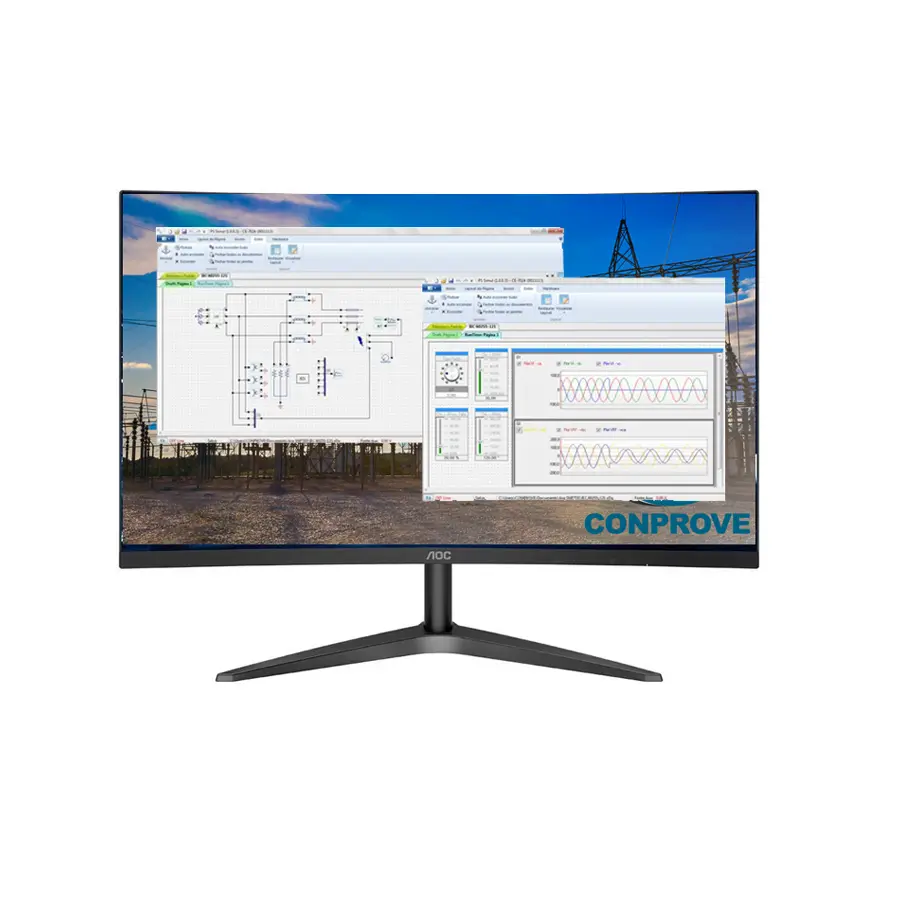Electromagnetic and Electromechanical Transient Studies and Simulations
Analysis of Critical Phenomena in Power Systems
In power systems, electromagnetic and electromechanical transients represent sudden changes in operating conditions, usually caused by events such as switching operations, short circuits, motor starts, or lightning strikes. These abrupt variations, even if short-lived, can cause serious impacts on equipment performance, network stability, and operational safety in industrial facilities and power utilities.
Although they occur within milliseconds, these phenomena often impose voltage and current levels much higher than steady-state values, potentially compromising the integrity of circuit breakers, transformers, reclosers, motors, and other critical assets. Understanding, predicting, and mitigating the effects of these events is one of the greatest challenges in modern electrical engineering.
What Are Electromagnetic and Electromechanical Transients?
- Electromagnetic Transients involve rapid variations of current and voltage due to sudden changes in the system’s electromagnetic field, such as:
- Energization and de-energization of lines or transformers;
- Opening and closing of circuit breakers;
- Single-phase, two-phase or three-phase faults;
- Overvoltages caused by lightning strikes;
- Oscillations caused by transformer saturation.
- Electromechanical Transients are related to variations in the speed and position of rotating electrical machines, such as:
- Angular instability in generators;
- Acceleration/deceleration of motors during startup or faults;
- Frequency fluctuations;
- Loss of synchronism in interconnected systems.
The Importance of Transient Studies
Conducting in-depth transient studies allows for:
- Analysis of switching and energization maneuvers;
- Simulation of events such as lightning strikes and short circuits;
- Verification of protection and insulation coordination;
- Identification of risks to sensitive equipment;
- Planning mitigation solutions such as filters and surge protectors;
- Improving system reliability and operational safety.
Simulations with PS Simul – Conprove Technology
To meet the growing demand for advanced transient studies, Conprove developed PS Simul, a simulation software that allows precise modeling of electrical and control systems with a focus on electromagnetic and electromechanical transients.
PS Simul is a powerful computational tool, based on proven numerical techniques, that enables:
- Time-domain simulation with high precision;
- Accurate representation of electrical networks and control components;
- Interaction between power system and automation models.
PS Simul Features and Advantages
- Library with over 400 functional blocks, including:
- Transmission lines modeled by lumped and distributed parameters;
- Transformers with and without saturation;
- Dynamic and steady-state loads;
- Synchronous and asynchronous machines;
- Switching and protection devices;
- Excitation systems and regulators;
- Digital control logic.
- Intuitive graphical environment with block diagram assembly;
- Simulation interface with full parameter and initial condition control;
- Report generation;
- Post-processing tools for detailed transient analysis.
Typical Applications
- Transformer energization studies with inrush current analysis;
- Switching transient simulation in transmission lines;
- Overvoltage analysis caused by lightning strikes;
- Angular and frequency stability studies;
- Evaluation of industrial motor startups and their system impacts;
- Voltage recovery analysis in circuit breakers.







